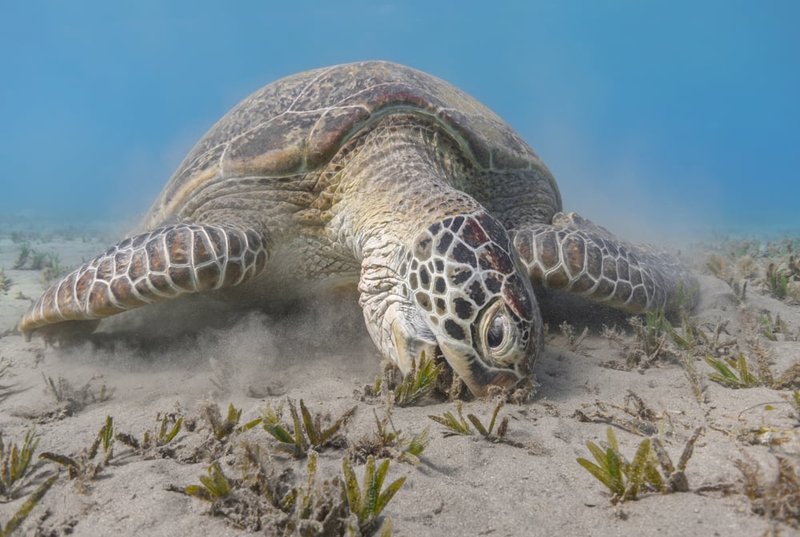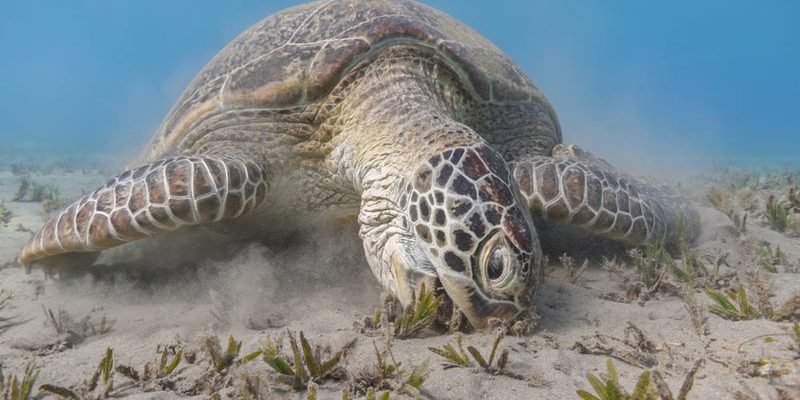
Loggerhead turtles are omnivores, meaning they eat both plants and animals. Their diet varies based on the region they inhabit, much like how your favorite foods might change depending on the season. From jellyfish to seaweed, loggerheads have some unique eating habits that not only support their growth but also impact the health of their environment. So, let’s dive into the world of loggerhead turtles and explore what’s on their menu!
Understanding the Loggerhead Turtle’s Habitat
The loggerhead turtle (Caretta caretta) calls many places home, but they tend to favor warmer waters. They can be found in the Atlantic, Pacific, and Indian Oceans. In these regions, their feeding habits are influenced by the availability of food in their environment. Think of it this way: if food is abundant in a particular area, the turtles will stick around to feast!
Their primary feeding grounds generally include coastal regions, where they can easily access a buffet of food options. They often graze on sea grass beds and coral reefs, which are like their dining tables. Not only does this habitat provide food, but it also offers shelter from predators, making it a vital part of their life cycle.
What Do Loggerhead Turtles Eat?
Loggerhead turtles have a diverse diet, which is why they can thrive in different habitats. Their menu includes a variety of items, such as:
- Jellyfish: These are a favorite snack for loggerheads, providing them with a nutritious meal.
- Crustaceans: From crabs to shrimp, these tasty morsels are a staple in their diet.
- Seaweeds: Loggerheads munch on different types of algae and sea grasses, contributing to their balanced diet.
- Fish: Occasionally, they’ll feast on small fish, adding some protein to their meals.
Eating such a varied diet helps loggerheads maintain their health, which is crucial for their long lifespan of up to 50 years or more. Here’s the thing: their ability to adapt to different food sources is impressive and showcases their resilience in changing environments.
Feeding Techniques of Loggerhead Turtles
Loggerhead turtles have some interesting feeding techniques that help them enjoy their meals. One common method is called “benthic foraging.” This means they dive to the ocean floor to search for food, often using their strong jaws to crush hard-shelled prey like crustaceans. Imagine them like little underwater bulldozers, carefully digging through sand and rocks to find their next snack.
Another technique they use is surface foraging, where they float near the surface and use their strong front flippers to grab floating jellyfish or algae. This method is especially useful when jellyfish blooms occur, offering a smorgasbord of food options. Watching loggerheads in action is like seeing nature’s culinary experts at work!
The Impact of Loggerhead Diet on Marine Ecosystems
The diet of loggerhead turtles is not just a personal preference; it plays a significant role in the health of marine ecosystems. By consuming jellyfish and other prey, loggerheads help regulate the populations of these species, ensuring that the ocean’s delicate balance is maintained.
When loggerheads munch on seagrasses and algae, they help keep these habitats healthy and thriving. This is crucial because seagrass beds act as nurseries for many fish species and provide oxygen for the water. So, every time a loggerhead takes a bite, they’re not just feeding themselves—they’re contributing to the bigger picture of ocean health.
Challenges to Loggerhead Diet and Habitat
While loggerhead turtles are highly adaptable, they face several challenges that impact their diet and habitat. Overfishing is one of the biggest threats; when fish populations decline, it can affect the food supply for these turtles. Think about how frustrating it is when your favorite restaurant runs out of your go-to dish—loggerheads feel that crunch when they can’t find their preferred meals.
Pollution is another significant issue. Plastic waste in the ocean often resembles jellyfish, leading loggerheads to mistake it for food. Such confusion can have dire consequences for their health, sometimes resulting in serious digestion problems or even death. Protecting their habitat is essential, not just for the turtles but for the entire marine ecosystem.
The Importance of Conservation Efforts
Conservation efforts are crucial for ensuring that loggerhead turtles can continue to thrive in the wild. Many organizations are dedicated to protecting nesting sites and raising awareness about the challenges these turtles face. Efforts like beach cleanups help remove debris from their habitats, making it safer for them to feed and breed.
Moreover, supporting sustainable fishing practices can ensure that there’s enough food for loggerheads and helps maintain healthy fish populations. As individuals, we can make an impact by reducing plastic use and supporting environmentally-friendly initiatives. Every little bit helps, and with a collective effort, we can contribute to the preservation of these remarkable creatures.
The Loggerhead Turtle’s Feeding Behavior Over Time
Over the years, researchers have observed changes in the feeding behaviors of loggerhead turtles as their environments evolve. For instance, as certain food sources become scarce, loggerheads have adapted by changing their foraging habits. This adaptability is a testament to their resilience in the face of environmental pressures.
It’s also fascinating to see how loggerheads can shift their diets based on seasonalavailability. During certain times of the year, they may focus more on jellyfish, while during other seasons, they might target crustaceans. This flexibility ensures they can make the most of what the ocean offers, much like how we might experiment with our meals based on what’s fresh and available.
In closing, the diet and feeding habits of the loggerhead turtle are captivating and complex. Their role as omnivores navigating their habitats showcases the delicate balance of our oceans. By understanding their diets and the challenges they face, we can all play a part in ensuring these magnificent turtles continue to grace our seas for generations to come. Together, let’s work towards protecting their environment and supporting their survival in a changing world.

